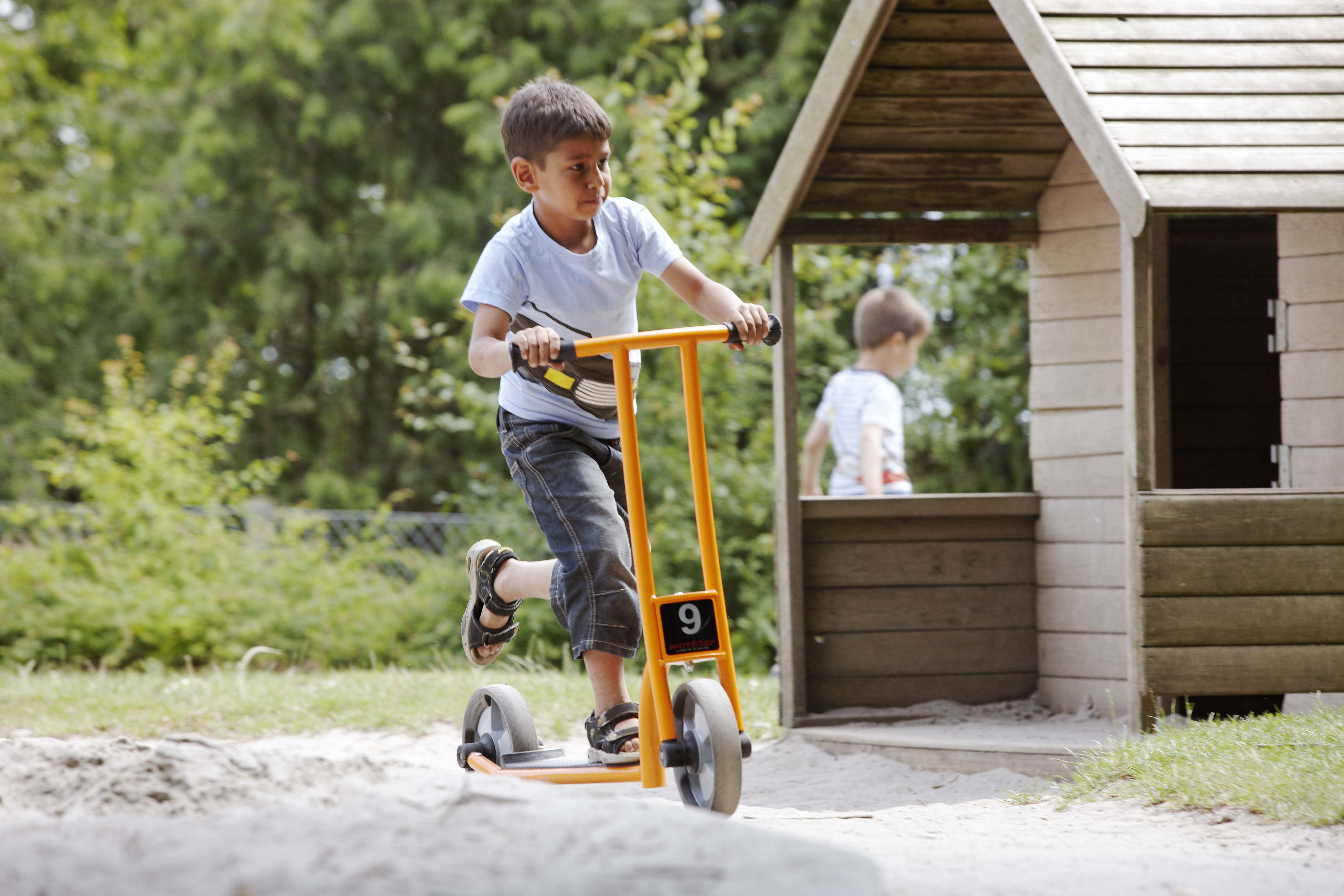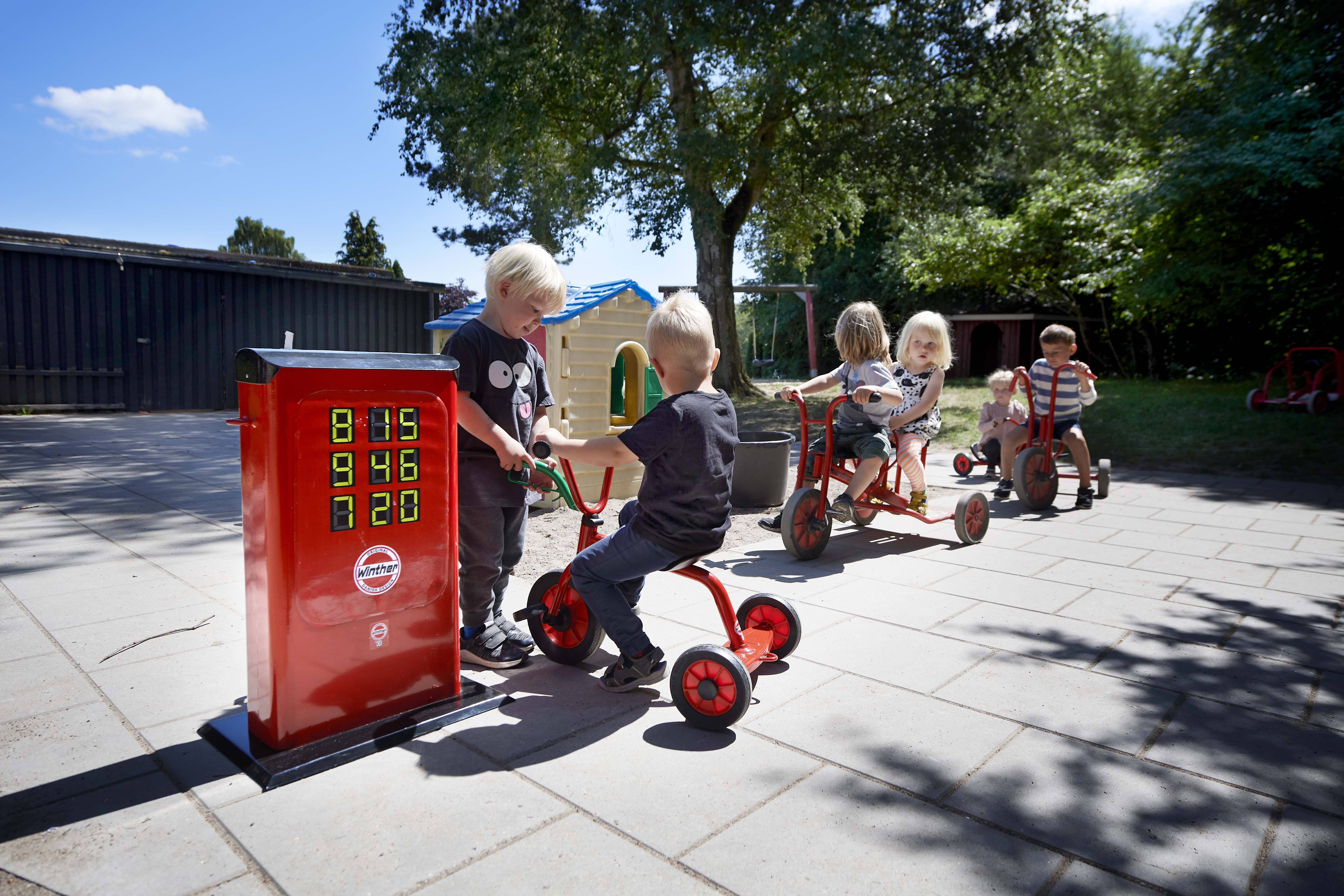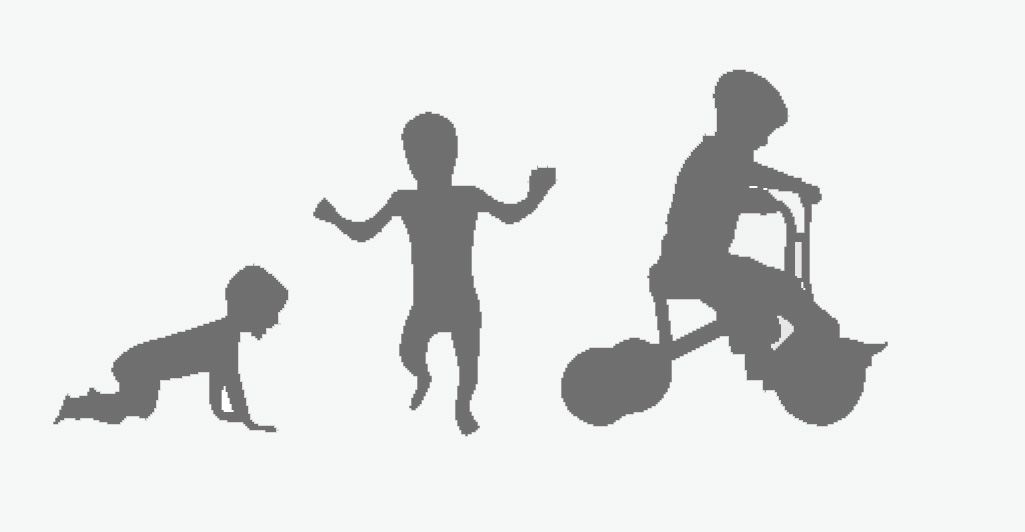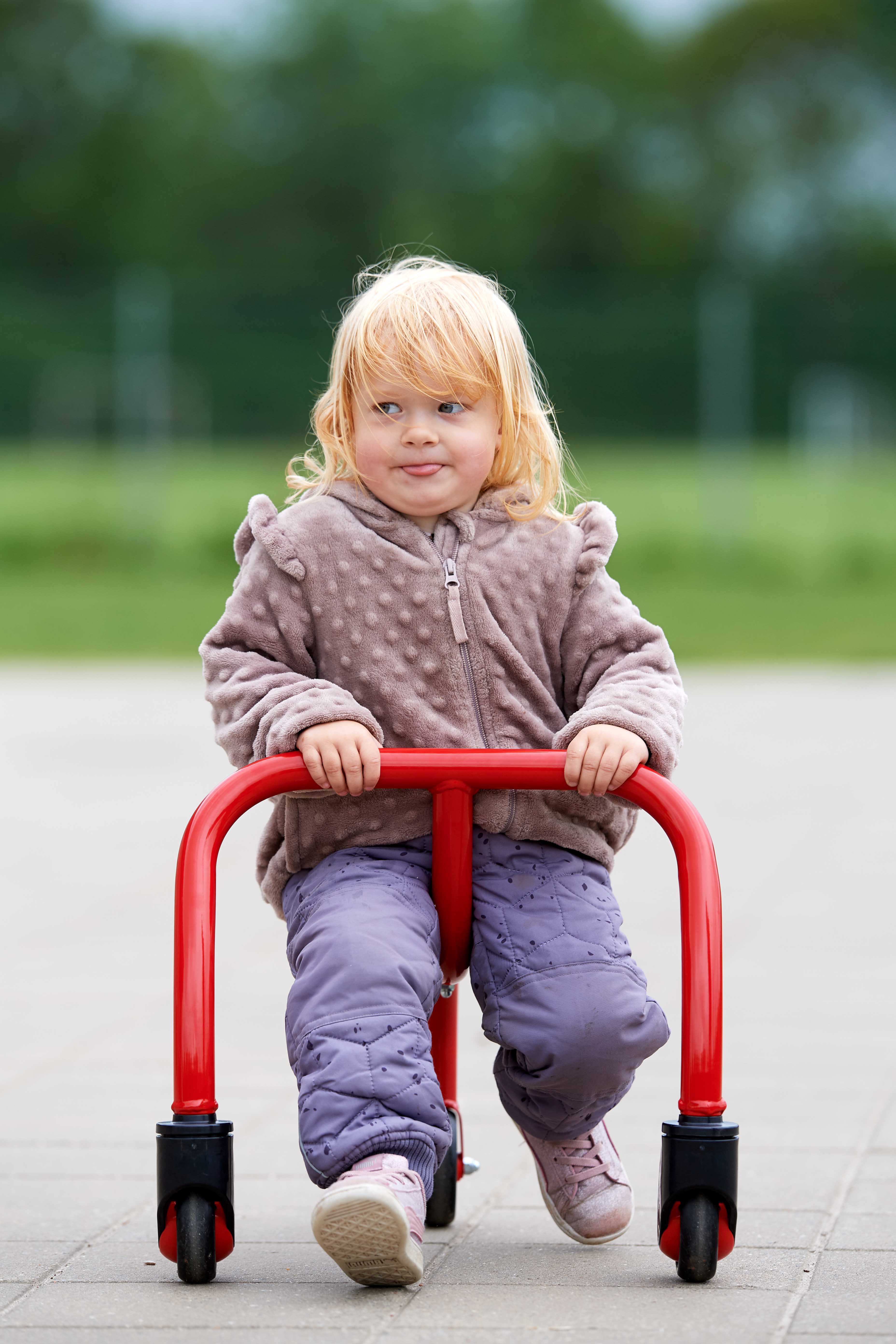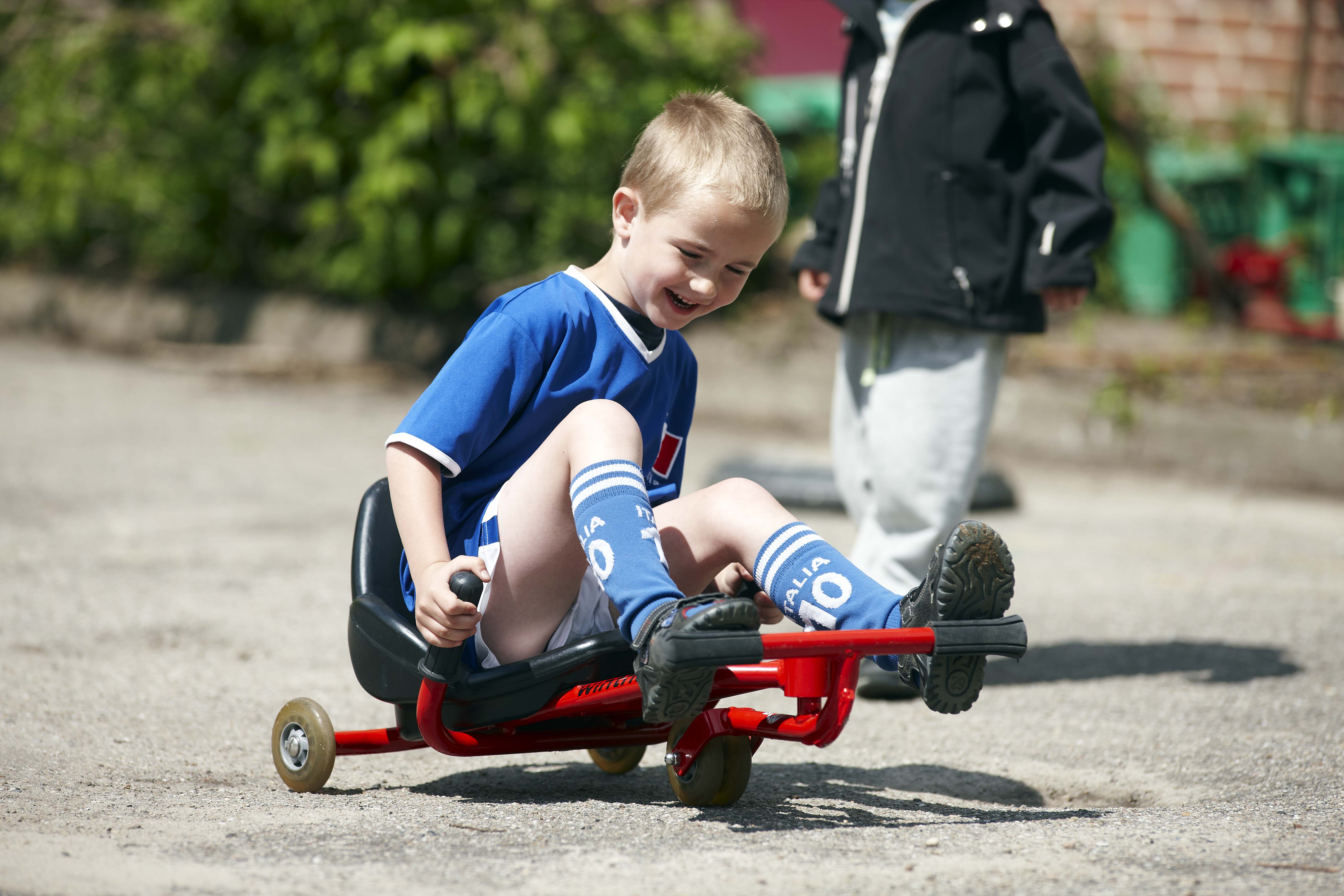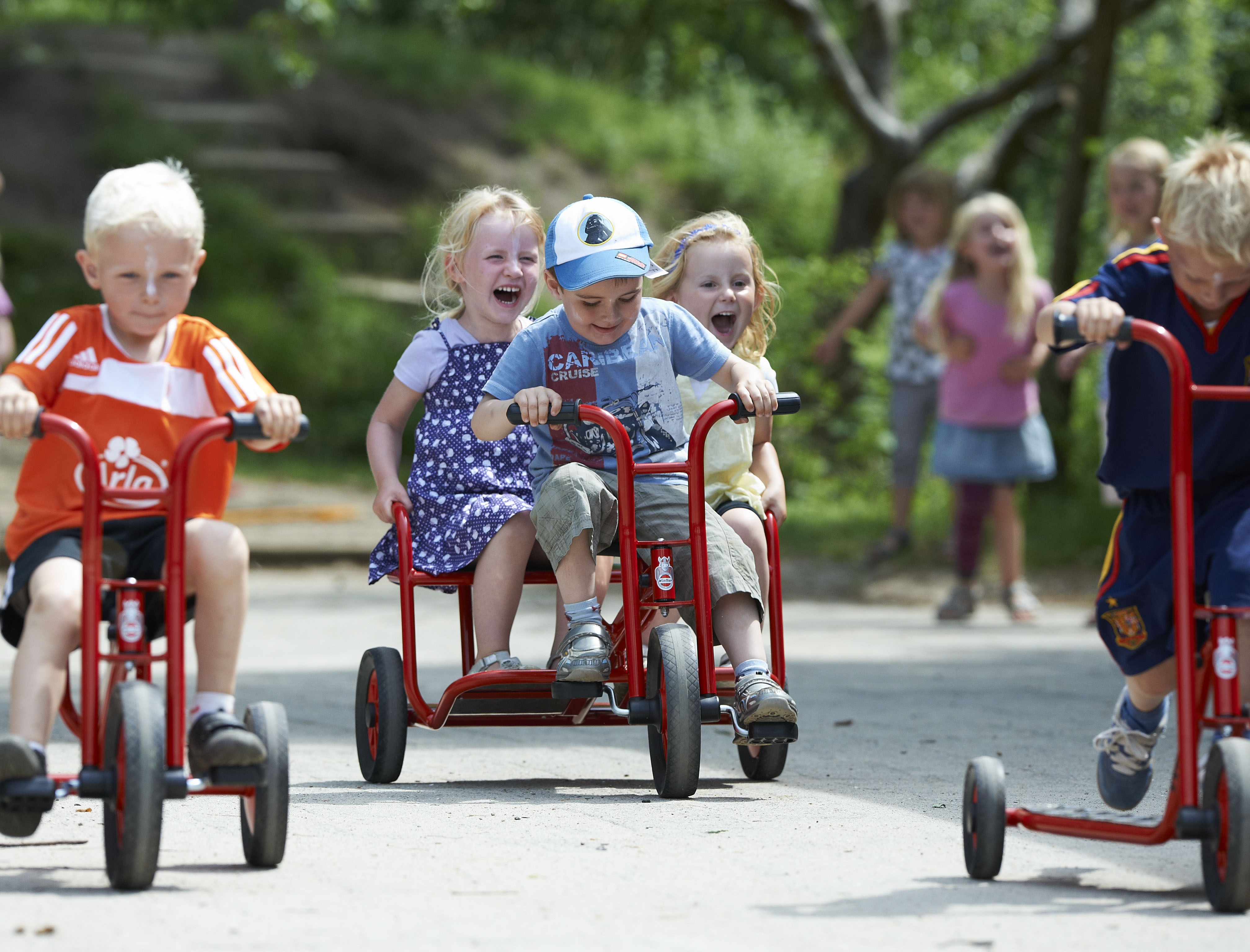The canals and otoliths of the inner ear are both stimulated, when the body is moved forward, backwards or sideways compared to the surroundings, and turning the head to observe and navigate.
The vestibular system is very small, placed in the inner ear, but with a big impact upon movement and postural alignment. The system registers which way is up and where the body is in space, as well as the direction of movement, through movements of the head. It keeps the body balanced and reflexively delivers information to postural muscles.
The system is built up of 3 semicircular canals (horizontal, Anterior, Posterior) and 2 Otoliths (Utricle, Saccule containing the ear stones) on each side of the head.
The 3 canals register head motions and velocity of movement.
The Otoliths register linear acceleration and are divided into the Utricle which registers horizontal linear acceleration and head tilt when the body is upright and the Saccule which registers vertical linear acceleration and head tilt when the body is lying down.
Balance is a reflective skill and is therefore trained by improving vision and proprioception, as well as the sensitivity of the canals and Otoliths to register head movements through actions such as tumbling, rolling, spinning and moving at different speeds.
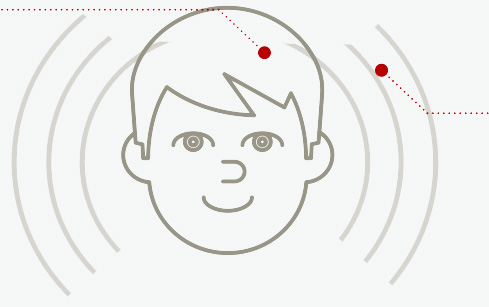
How biking affects your vestibular system
When children are riding on a bike, trike or scooter and moving forward and staying up right stimulating the Otoliths - mainly the Utricle, but the Saccule will be registering when going over bumps.
When you move your head to navigate you stimulate all 3 canals, which tells the brain the position of the head compared to the horizon, so the brain can make sure the body counter adjust, so you do not fall.
The different bikes challenge the canals and otoliths on different levels.
The Winther push bikes have a lot of support from the seat and the feet has contact to the ground, so the challenge of staying up right is small, but the moving forward and navigating systems are full on.
The Winther Tricycles are more stable being supported on the ground by the three wheels, but now the feet are not on the ground but on the pedals, which gives a little more challenge to the Utricle and the canals to keep the body up right, while they still register the forward movement and navigating.
The Winther Bicycles have not got the extra support and therefore is the most challenging together with other two-wheel models.
The Winther Scooters also challenge the balance, instead of sitting you are standing on one leg while pushing the scooter with the other leg, in between balancing on the two wheels, moving forward and navigating.
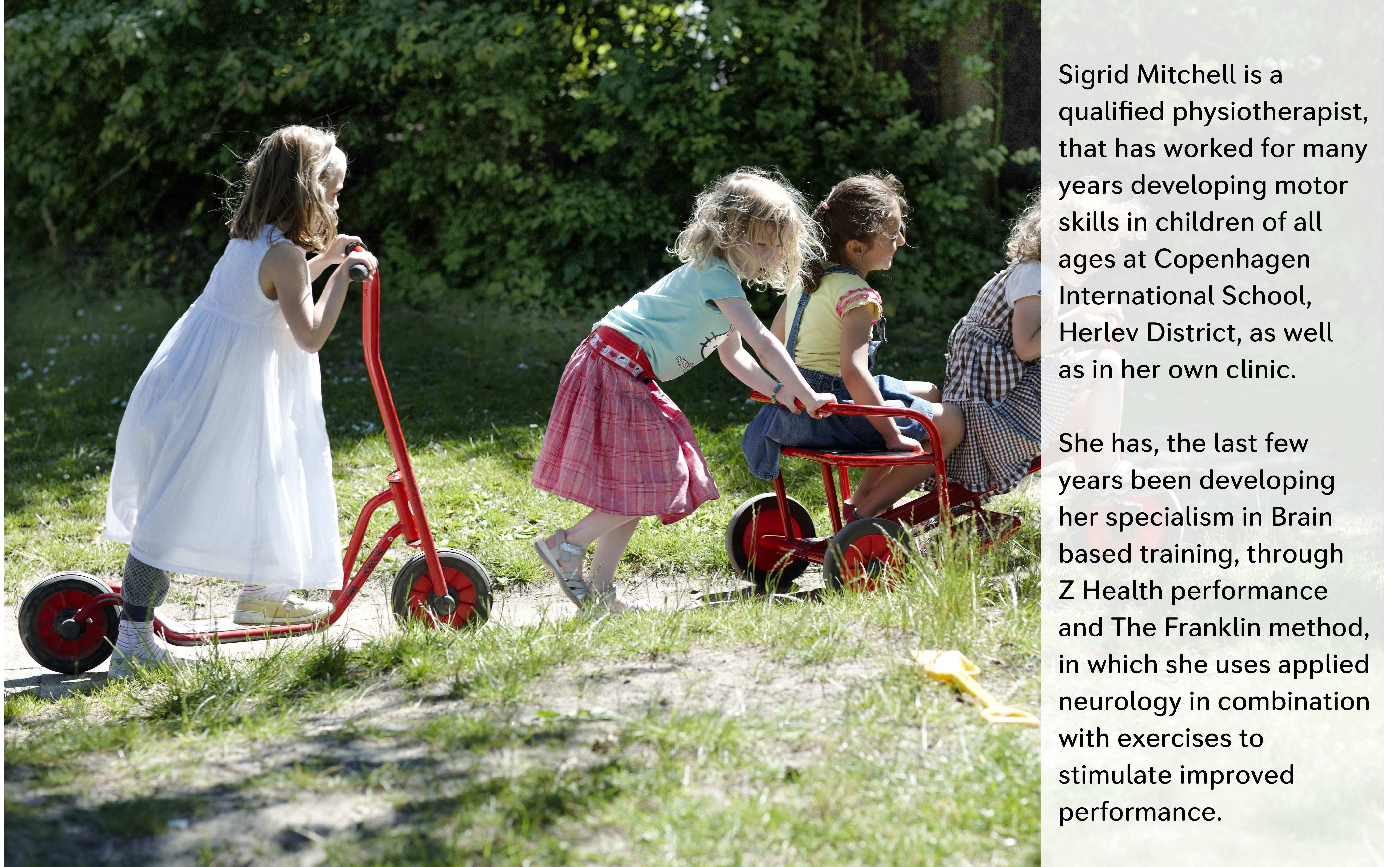

 By physiotherapist, Sigrid Mitchell
By physiotherapist, Sigrid Mitchell 